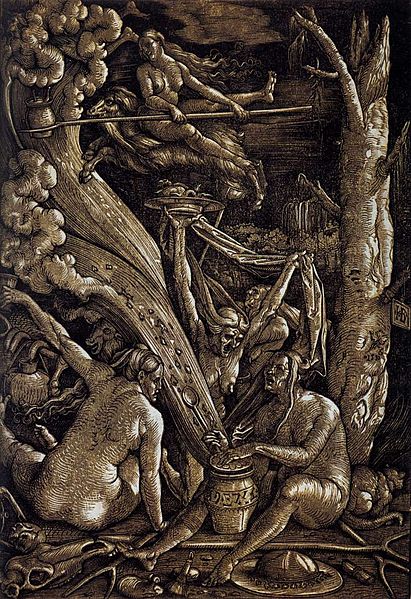Witch-Hunting and Women in the Art of the Renaissance
The artistic images of women depicted as witches were varied and constitute unusual 'pieces of history' by preserving a visual record of the intellectual origins of the witchcraze, as Dale Hoak discusses here.
 The European witchcraze stands as a clear example of the dynamic power of a cultural myth, the myth than an earthly alliance of Satan’s minions (most of them female) had conspired to destroy Christendom. The fantasy usually fed upon fear; myth became reality when the terrible life-denying sorcery of the stereotyped witch could be made to explain unpredictable or catastrophic misfortune. For example, witchcraft might explain shipwreck, sexual impotency, or an outbreak of the plague. In each case, belief in witches assumed the efficacy of an occult system of malevolent, supernatural powers.
The European witchcraze stands as a clear example of the dynamic power of a cultural myth, the myth than an earthly alliance of Satan’s minions (most of them female) had conspired to destroy Christendom. The fantasy usually fed upon fear; myth became reality when the terrible life-denying sorcery of the stereotyped witch could be made to explain unpredictable or catastrophic misfortune. For example, witchcraft might explain shipwreck, sexual impotency, or an outbreak of the plague. In each case, belief in witches assumed the efficacy of an occult system of malevolent, supernatural powers.





